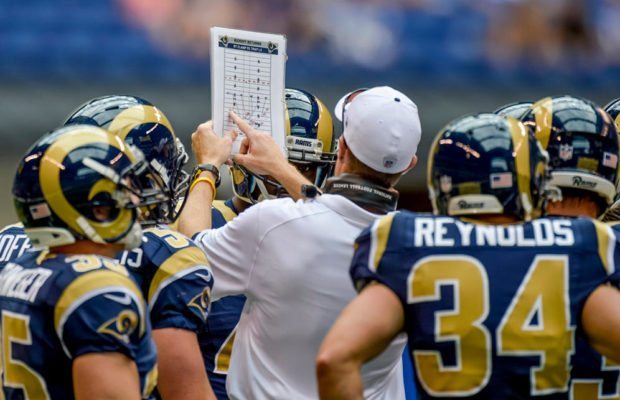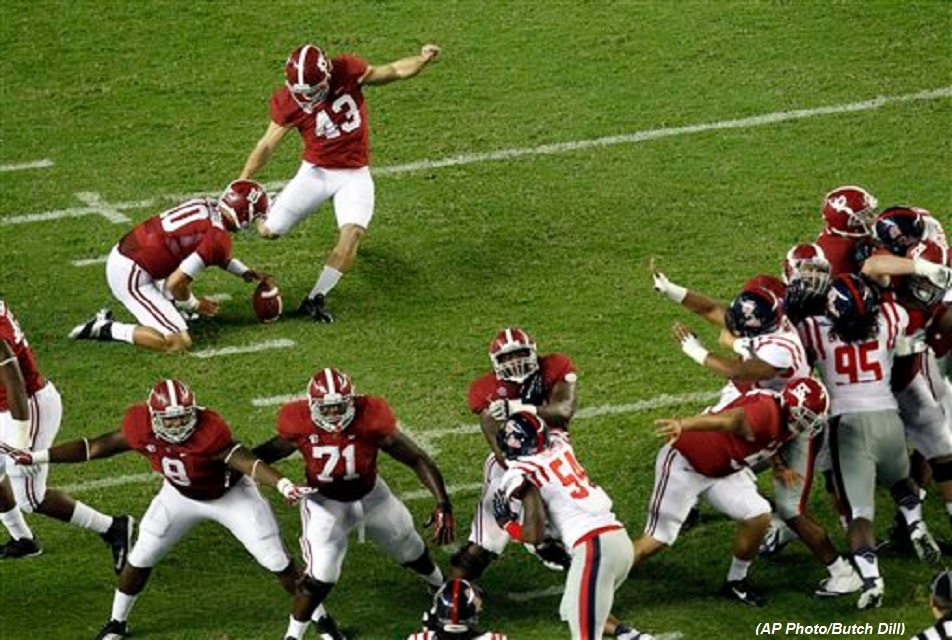Special Teams: The Three Dimensional Game

Every coaching job I have taken, I ensured it involved an active role in Special Teams (ST). This decision was based on the greatest piece of professional advice I have ever received. My college coach told me, “become proficient at ST, and you will never struggle to find a job.” The fact a ST Coordinator will always have a job in the NCAA, has really limited that aspect of the game in Europe.
As coaches, we have often heard, maybe even used, the standard talking points about ST being important. Although, too often, our actions tell a different story. It isn’t that coaches intentionally send one message with their words and another with their actions, but usually it is that we have not been trained how to make those statements become facts.
The point of ST, in my opinion, is not, necessarily, to “win the day,” but it should be used more as a tool to steal time from an opponent’s Offensive Coordinator (OC) and/or Defensive Coordinator (DC) in preparation, to prepare for our ST. However, if they choose not to prepare, they will be forced to deal with the consequences, much as if they had not prepared for a unique offensive or defensive scheme a team might run.
Special Teams Responsibilities
Traditionally, there are three (3) ways ST responsibilities are assigned to the staff: the Head Coach (HC) takes them, the individual units are assigned to various coaches, or the “youngest” coach on the staff is assigned the title of ST Coordinator. Depending on the staff, each one of these systems can be beneficial, but if the HC does not have the tools to ensure the success, they all have some major drawbacks.
HC – Often, this system is used not because the HC has knowledge on ST, but rather it is intended to free up the Offensive & Defensive staff to concentrate on their O or D responsibilities. So the HC “dusts off” an old scheme that was used somewhere in his past, but he does not fully understand the schemes strengths and weaknesses.
Division – The ST often lacks an overall identity, and each individual unit becomes an extension of the coach that is responsible for it. Often times, you will see a unit that is run by a defensive coach will have a more aggressive posture (blocks, fakes, etc), and a team run by an offensive coach will have more of a “live to fight another day” posture (simple kick, protection, return schemes). The problem with this is now a team can concentrate on preparing for one or two, and instead of stealing time from the OC or DC they can shift ST prep time from one unit to another.
“Youngest” coach– This idea sounds great in theory, but the coach selected is, often, the one that was the least likely to fight the additional responsibility. In other words, this is a guy who, no matter how invested or knowledgeable he becomes, is not likely to find his voice when he needs a few extra minutes “this week.” Additionally, with no OC/DC time under his belt, he is probably not familiar with running an 11-on-11 period, and unlike an OC or DC, who can rely on his counterpart to set the scout team, the ST Coordinator is often responsible for all 22 men.
Even a team that has to rely on one of these methods, can still see success in their ST game, by ensuring they know how to maximize the strengths and minimize the weaknesses of each of the systems. The most successful method I have seen is a merging of the above. A “young” coach is in charge, the HC supervises him, and the other coaches are broken up to be the assistants.
Tools for the Third Dimension
As I discussed in “The Three Dimensional Game,” many teams fail to fully incorporate Special Teams (ST) as a feared aspect of their arsenal. I have developed a few simple rules that I always include in my ST philosophy, scheme, and, implementation, which have led to success in multiple stops in Europe.
Be Slightly Different: ST does not have to be complex, to steal time from the oppositions’ prep time. This season, of the 6 opponents we will face, we will see a slight variation of the same Kickoff Return (KOR) 5 times, and even the 6th opponent is not that drastically different. So by doing something slightly out of the norm, we limit our opponents’ ability to just run the same Kickoff (KO) coverage scheme.
Everything Serves a Purpose: Anything that the players need to learn, for ST, is in addition to what they need to learn for offense or defense, and minus some very basic techniques (IE. tackling, blocking, running), there is few times there is much carryover to their offensive/defensive position. So limit what they need to learn to only those things that are absolutely necessary.
ST Can NOT be Punishment: Coaches often feel that ST takes time from positional training. So to steal time for more reps, coaches will keep working individual drills with those not on the team being worked. This leads players on ST, who are often 2nd or 3rd string on offense/defense, feel like they are being shorted chances to get better, and move up the depth chart, at their main position. So all the coaches on our staff know that during ST time they are to help me, by keeping them active it prevents them from “stealing reps” and makes them feel a sense of ownership over the ST.
Someone MUST be Accountable: The first procedural note in my playbook states that the only three people allowed to pull a player from any ST unit is the ST Coordinator, Head Coach (HC), or the Physio. One of the best ways I have learned to reinforce that is I ensure the physio comes to me and tells me when a player is down (any player, whether on ST or not), and then I relay it to the appropriate Coordinator and the HC. This ensure that I do not get missed on injuries to potential ST players, and it also subconsciously reinforces to the Coordinators the importance of ST.
All Coaches Have a Role: Depending on the number of the coaches, on the staff, I break the various teams into logical “position groups” and the individual coaches become my “position coaches,” and during games coaches are responsible for their position group, just as they are on offense/defense, and all other meetings/huddles stop during ST to allow coaches to watch their “position.”
Excitement is Contagious: Coaches, players, and imports have all told me, “you get way too excited about ST.” While I do value ST, maybe a little too much, that is actually a “recruitment” technique I use. My thinking goes like this, if the team believes that I am that excited about ST, then for various reasons they will “accidentally” get excited. I will save the sports psyche reasons, but there are subconscious factors at play.
Just like with Offense or Defense, what works in one organization may not work in the next, but these are general techniques that I have learned over 10 years as a ST Coordinator, and while I might slightly modify how they manifest themselves, each of these principles have been implemented everywhere I have been.
